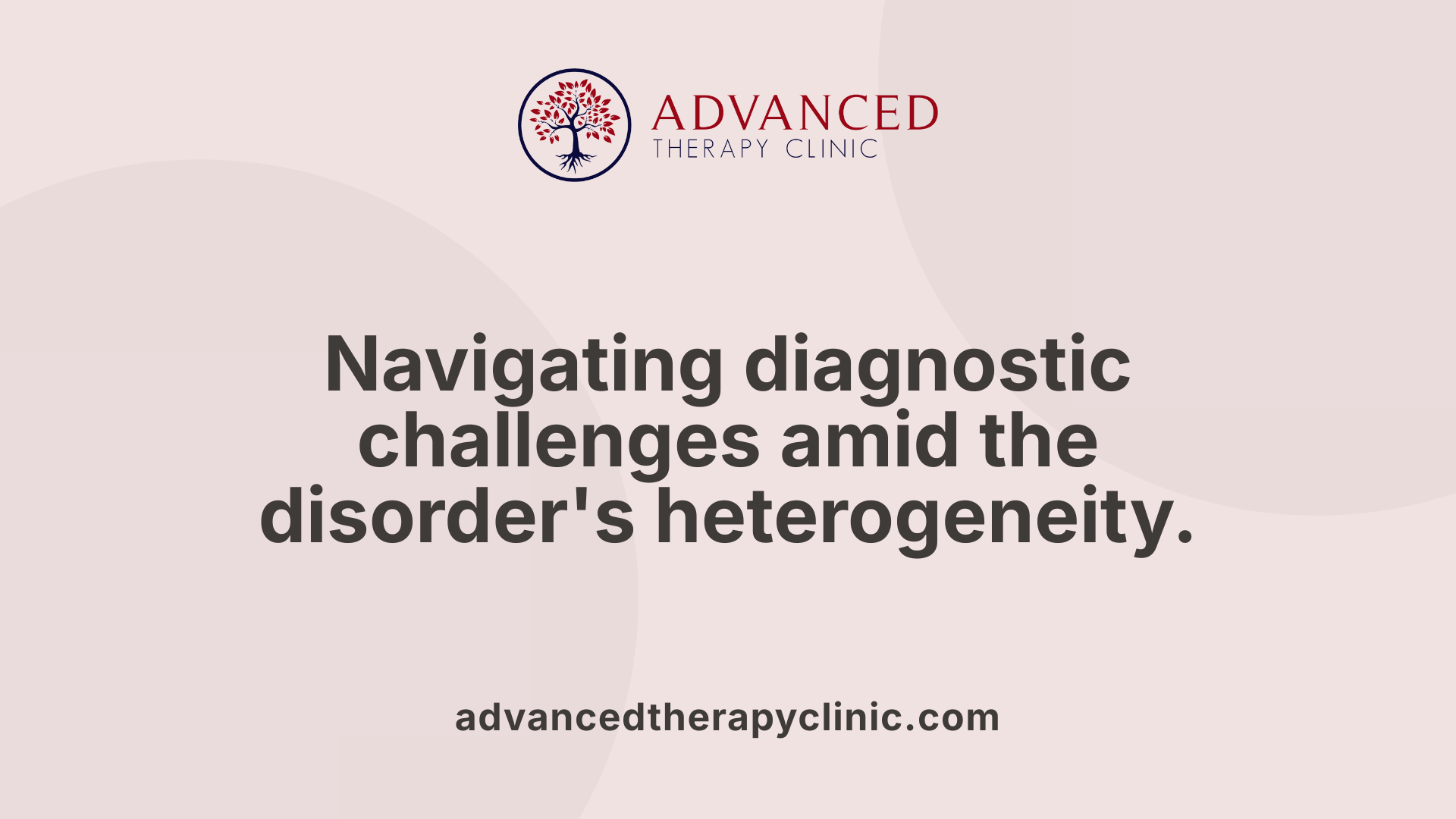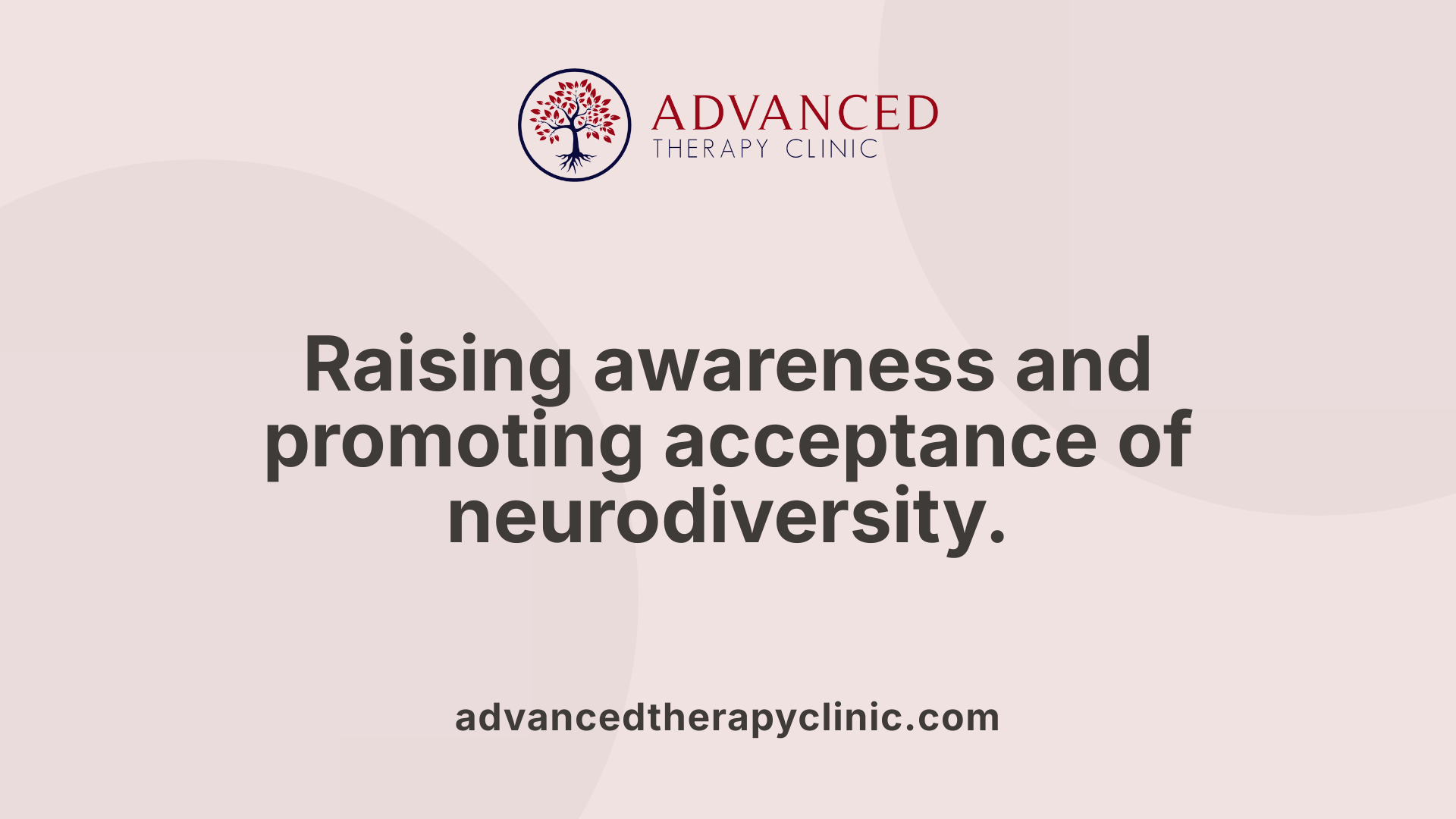Is Autism Natural


Exploring the Nature of Autism Spectrum Disorder (ASD)
Autism Spectrum Disorder (ASD) is a complex neurodevelopmental condition characterized by a wide range of behaviors, skills, and challenges. Its prevalence, underlying causes, and perceptions have evolved significantly as scientific research advances, fueling ongoing debates about whether autism is a natural variation or a disorder needing correction. This article delves into the biological, genetic, and environmental foundations of autism, examining whether it can be considered a natural aspect of human diversity.
Autism as a Natural Neurodivergence

Is autism a natural or innate variation?
Autism is best understood as a natural, innate variation in human neurodevelopment that has deep biological and genetic foundations. Scientific studies strongly support the view that autism arises from a complex interplay of genetic factors, with an estimated 80-90% of risk attributable to inherited genetic mutations. These genetic influences involve hundreds of genes that shape brain development, synaptic connectivity, and neural pathways.
Environmental factors, such as prenatal exposures, maternal age, or substance use during pregnancy, can influence the likelihood of autism. However, these factors tend to act alongside genetic predispositions, rather than serving as direct causes. The evidence suggests that autism’s roots are ingrained from early fetal development, often detectable by markers emerging before age three.
Importantly, autism is not simply a disorder to be cured but a neurodivergent variation—an integral part of human diversity. It reflects different ways of thinking, perceiving, and interacting with the world. Many autistic individuals see their condition as a natural aspect of their identity rather than an illness.
In summary, autism represents a natural variation in human neurobiology, rooted primarily in our genome. Its manifestations are shaped by genetic makeup and early developmental processes, making it a fundamental part of human diversity rather than a defect or illness to be eradicated.
Exploring the genetic and environmental balance in autism
Genome research shows that autism involves complex genetic contributions, with variations in dozens of genes linked to its development. These include mutations affecting neuronal cell adhesion and synaptic function.
Environmental factors, such as prenatal air pollution, advanced parental age, and certain maternal health conditions, may increase the risk but are not primary causes. Instead, they can influence gene expression and neurodevelopmental trajectories.
Understanding autism as a natural and biological variation—emerged from extensive genetic and developmental research—promotes acceptance and supports personalized approaches to support autistic individuals.
| Aspect | Contribution | Impact | Typical Factors |
|---|---|---|---|
| Genetics | Inherited mutations, de novo variants | Major | Family history, genetic testing |
| Environmental | Prenatal exposure, parental age | Modulating | Air pollution, maternal health |
| Developmental | Early brain development | Manifestation | Fetal brain growth, synaptic formation |
Research into how these factors combine continues to shape the medical and social perspective on autism, emphasizing its natural roots in human neurodiversity.
Genetic Foundations and Heritability of Autism

What are the genetic and biological foundations of autism?
Research indicates that genetics play a dominant role in autism spectrum disorder (ASD). Heritability estimates from twin and family studies suggest that approximately 83-90% of autism risk can be attributed to genetic factors. Many gene mutations and inherited variations contribute to how the brain develops and functions, with some of the most studied being mutations in the CHD8, SHANK3, and PTEN genes. These genes are crucial for neuronal development and synaptic communication.
Family history significantly raises the chances of autism; siblings of children with ASD have about a 20-25% chance of being diagnosed themselves. This familial tendency points to the strong genetic component. Furthermore, genetic mutations, such as copy number variations and de novo mutations—those that are new and not inherited—are also associated with increased autism risk.
Environmental factors during prenatal stages, like maternal infections, health conditions, and exposure to certain toxins such as lead or mercury, can influence autism development, particularly when combined with genetic vulnerabilities. However, despite some environmental influences, the core biological basis of autism remains rooted in genetic factors. Advances in genetic testing have helped identify specific mutations, deepening our understanding of autism’s complex biological foundations.
Environmental and Prenatal Influences
 The development of autism spectrum disorder (ASD) is influenced by a combination of genetic and environmental factors that occur before birth. Prenatal exposure to toxins, such as pesticides and air pollutants, has been studied as a possible risk factor. These environmental agents may interfere with fetal brain development, increasing the likelihood of autism, although research findings are ongoing.
The development of autism spectrum disorder (ASD) is influenced by a combination of genetic and environmental factors that occur before birth. Prenatal exposure to toxins, such as pesticides and air pollutants, has been studied as a possible risk factor. These environmental agents may interfere with fetal brain development, increasing the likelihood of autism, although research findings are ongoing.
Maternal health conditions during pregnancy also play a significant role. Conditions like diabetes and autoimmune diseases can alter the prenatal environment, potentially affecting neurodevelopment. For example, maternal metabolic health issues may lead to inflammation or metabolic disturbances in the fetus, which are areas under active investigation.
Birth complications are another concern, especially those involving pre-term birth, low birth weight, or fetal distress. Such conditions can deprive the developing brain of necessary oxygen and nutrients, elevating autism risk. These perinatal factors are associated with alterations in early brain development and have been supported by epidemiological studies.
Moreover, prenatal infections—including viral exposures like rubella or cytomegalovirus—may contribute to autism. The use of certain medications during pregnancy is also linked to increased risk, though causality remains complex. Social determinants, such as socioeconomic status and access to healthcare, influence prenatal health and can indirectly affect autism risk.
Research indicates that autism traits, including high-functioning autism, are highly heritable. Heredity accounts for approximately 70 to 90% of ASD cases, with many genetic variations, like copy number variants and mutations, being inherited or occurring spontaneously. These genetic factors integrate with environmental influences to shape neurodevelopment.
In summary, prenatal environmental exposures—including toxins, maternal health conditions, birth complications, and infections—contribute to the risk of autism. Understanding these interactions is crucial for early interventions and developing strategies to mitigate risks during pregnancy.
The Spectrum of Autism and Its Diagnostic Complexity

What are the different ways autism can present across individuals?
Autism spectrum disorder (ASD) manifests with a wide range of behaviors, abilities, and challenges. Some individuals experience mild symptoms that allow for significant independence, while others face severe impairments requiring ongoing support. Symptoms such as language delays, social difficulties, repetitive behaviors, and sensory sensitivities vary greatly among people with autism.
Many individuals have unique strengths, like exceptional attention to detail, strong memory, or specific talents, which coexist with challenges. This variability is a core feature of autism, making each person's experience distinct.
How does the diversity of symptoms and causes complicate understanding?
Autism's broad phenotypical presentation arises from its complex and heterogeneous causes. Recent research shows that nearly 200 genetic and environmental factors are linked to the disorder. Different genetic mutations, copy number variations, and environmental influences during fetal development contribute to the spectrum.
This heterogeneity creates difficulties in pinpointing a single cause, leading some experts to question whether 'autism' should be viewed as a single condition or a collection of related but distinct variations. For example, some individuals have mutations affecting early brain development, while others may show changes emerging after birth.
What are the challenges in diagnosing autism?
Standard diagnostic criteria, such as those outlined in the DSM-5, are based on behavioral observations. However, because autism incorporates diverse behaviors and severity levels, diagnosis can be complex. Symptom onset usually occurs before age three, including signs like delayed speech, social withdrawal, and obsessive interests.
Advancements in genetic research and neuroimaging have begun to facilitate more precise diagnoses, leading to discussions about refining current criteria. Researchers are exploring biological subtypes and models that could improve accuracy and personalized care.
What is being learned from research into autism subtypes?
Recent studies at institutions like Princeton University have identified multiple biological subtypes of autism—such as social and behavioral challenges, developmental delays, and broad neurological impacts. These subtypes differ in genetic mutations, brain development trajectories, and symptom profiles.
Understanding these distinctions helps scientists develop targeted treatments and personalized interventions. It also emphasizes that autism is not a uniform condition but a collection of different neurodevelopmental pathways.
| Aspect | Findings | Implications |
|---|---|---|
| Genetic Variability | Over 200 genes involved; some mutations are inherited, others are spontaneous | Promotes personalized genetic testing and potential gene therapies |
| Symptom Diversity | Ranges from mild to severe, with different associated strengths | Challenges in diagnosis and tailored interventions |
| Biological Subtypes | Four genetically distinct categories identified | Enables precision medicine approaches |
| Diagnostic Challenges | Behavioral criteria may not capture biological diversity | Calls for revised criteria based on biological markers |
Autism’s diversity in presentation and cause makes understanding and diagnosing the disorder complex. Recognizing this variability is crucial in advancing research, improving diagnosis, and providing personalized support for autistic individuals.
Cure or Support: The Modern Approach to Autism
Can autism be cured?
Autism spectrum disorder (ASD) is regarded as a natural variation in neurodevelopment rather than a condition that can be cured. There is currently no scientific evidence or medical treatment capable of eradicating autism entirely.
Instead, efforts are focused on early interventions and support strategies that enhance an individual's abilities and improve overall quality of life. These include behavioral therapies such as applied behavior analysis (ABA), speech therapy, occupational therapy, and tailored educational programs.
Medications may also be used to manage specific associated symptoms like anxiety, hyperactivity, or sleep issues, but they do not address the core characteristics of autism itself. Supportive care aims to develop skills, foster independence, and help individuals navigate social and daily challenges.
Throughout life, ongoing support and adaptive strategies are essential. These help individuals leverage their strengths—such as attention to detail, reliability, and strong work ethic—and develop coping mechanisms for various social and environmental demands.
Modern treatments emphasize acceptance and understanding, with many advocating for recognizing autism as a form of neurodiversity. This perspective promotes inclusion, respect, and support, ultimately shifting the focus from
Advances in Autism Research and Future Directions

What are the genetic and biological foundations of autism?
Current research underscores the significant role of genetics in autism spectrum disorder (ASD), with heritability estimates as high as 83-90%. Twin studies consistently show that if one identical twin is autistic, there is over a 90% chance the other will be too, highlighting strong genetic influence. Specific gene mutations, such as in CHD8, SHANK3, and PTEN, affect brain development and neuron communication pathways, contributing to ASD susceptibility.
Family history is a major factor, with siblings of children with autism facing a 20-25% increased risk. The genetic component involves both inherited variations and spontaneous mutations, known as de novo variants, which can occur in genes active during fetal brain development between 12 and 24 weeks of gestation.
Environmental factors during pregnancy, including maternal health issues like diabetes, infections, and exposure to toxins such as lead or mercury, can influence autism risk, often interacting with genetic vulnerabilities. However, overall, genetics form the core biological basis of autism, shaping neural development and function.
Recent advances like genome-wide microarray analyses and neuroimaging techniques have deepened understanding of autism's biological roots. These methods have identified numerous genetic variations and patterns linked to different autism subtypes, paving the way for more personalized approaches to diagnosis and treatment.
| Aspect | Details | Impact |
|---|---|---|
| Genetic Variations | Mutations in CHD8, SHANK3, PTEN; copy number variations | Increase autism susceptibility |
| Heritability | Estimated 83-90% based on twin and family studies | Confirms genetic predominance |
| Environmental Factors | Prenatal infections, maternal health, toxins | Modulate risk alongside genetics |
Understanding the biological underpinnings of autism continues to evolve, with research now focusing on how genetic and environmental factors intertwine, affecting brain growth and function. Future directions aim to develop targeted, genetic-based therapies, with the goal of personalized interventions based on individual genetic profiles.
Sociocultural Perspectives and the Importance of Awareness

How do public perceptions and misconceptions about autism affect society?
Many societies still grapple with misconceptions about autism, often fueled by outdated or false information. A prevalent myth is the link between vaccines and autism, which has been conclusively disproven by scientific research. Such misconceptions have led to stigma, fear, and misinformation.
What is the impact of autism awareness campaigns?
Awareness campaigns play a vital role in spreading accurate knowledge about autism. They help normalize neurodiversity, reduce stigma, and promote understanding. Increased awareness encourages early diagnosis and access to tailored interventions, which can improve quality of life for autistic individuals.
How do advocacy and neurodiversity movements influence perceptions?
Advocacy groups and the neurodiversity movement emphasize viewing autism as a natural variation rather than a disorder needing cure. They promote the rights of autistic individuals, highlight their strengths, and push for acceptance and inclusion in all areas of society. This shift influences policy, education, and workplace practices.
What are the debates surrounding the classification and understanding of autism?
There is ongoing discussion within the scientific and autistic communities about how best to classify autism. Some argue that current diagnostic criteria, like those in the DSM-5, lump diverse profiles into a single diagnosis, which can hinder personalized approaches. Researchers explore subdividing autism into biological subtypes to improve understanding and treatment options.
Clarification on scientific consensus
Discredited theories, including the 'refrigerator mother' hypothesis and the vaccine-autism link, have been thoroughly refuted by scientific research, which confirms that autism is a natural neurodevelopmental variation.
| Aspect | Details | Additional Info |
|---|---|---|
| Public Perceptions | Often influenced by misconceptions and myths | Need for improved education |
| Awareness Campaigns | Increase knowledge, reduce stigma | Promote early diagnosis |
| Advocacy Movements | Emphasize acceptance, neurodiversity | Influence policy and societal attitudes |
| Classification Debates | Focus on biological subtypes and heterogeneity | Aim for personalized care |
| Scientific Consensus | Autism as a natural variation, not linked to vaccines | Supported by extensive research |
Redefining Autism: Natural Diversity and Our Collective Responsibility
Understanding autism as a natural variation rooted in our genetics and early development fosters a more inclusive and accurate perspective. Scientific evidence overwhelmingly supports the view that autism is a lifelong, innate neurodivergence rather than a disease to be cured. Embracing neurodiversity and promoting supportive, individualized approaches can enhance the well-being of autistic individuals and enrich our societal fabric. As research progresses, the focus must shift toward acceptance, personalized care, and recognizing the unique contributions of autistic people to human diversity.
References
- Is Autism Genetic? | UCLA Medical School
- Editorial: Is autism a biological entity? - PMC
- The Elusive Etiology of Autism: Nature and Nurture? - PMC
- What causes autism? | Autism Speaks
- What is autism - National Autistic Society
- The genetic mystery of why some people develop autism - BBC
- Major autism study uncovers biologically distinct subtypes, paving ...
- Causes of autism - Wikipedia
- Autism spectrum disorder - Diagnosis and treatment - Mayo Clinic
- Autism Spectrum Disorder (ASD) Symptoms & Causes
Recent articles

Expressive Speech Delay 2-Year-Old
Understanding and Addressing Expressive Speech Delay in Toddlers

How Speech Recognition Works
Unlocking the Power of Speech Recognition in Therapy and Healthcare

Autism and Head Size
Understanding the Complex Relationship Between Autism and Head Size

Occupational Therapy in Autism
Enhancing Independence and Quality of Life Through Occupational Therapy in Autism

Do Autistic People Understand Sarcasm?
Navigating the Nuances: Understanding Sarcasm and Social Communication in Autism

Autism Routines
Crafting Effective Daily Structures for Children with Autism

